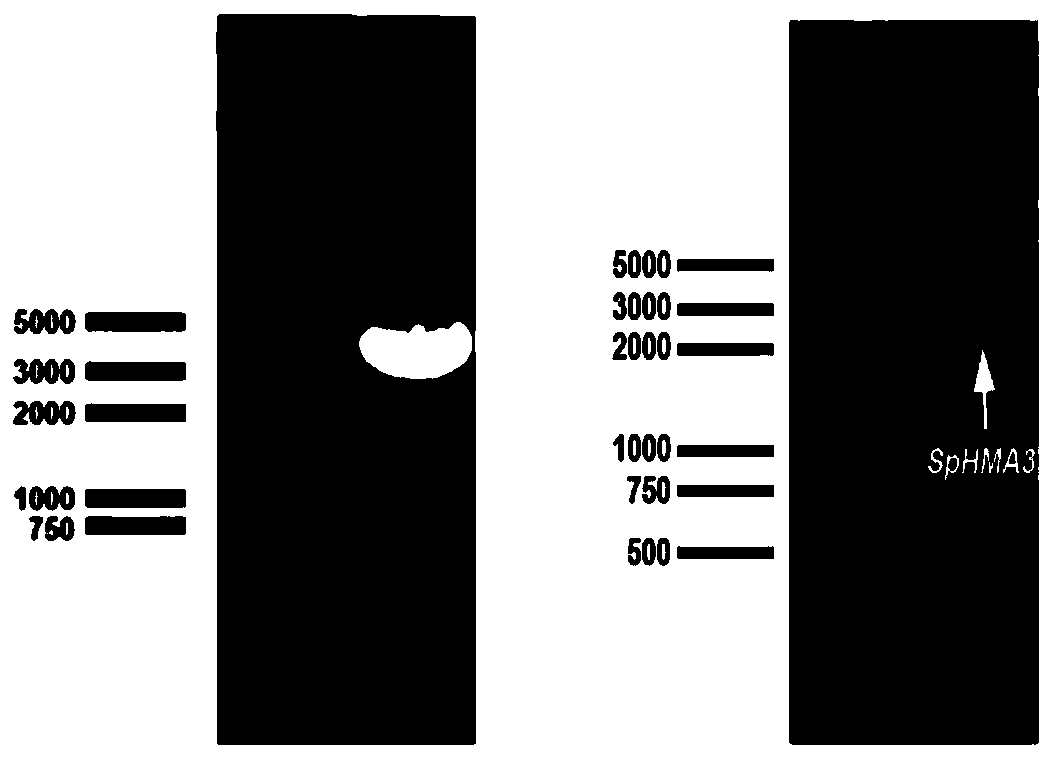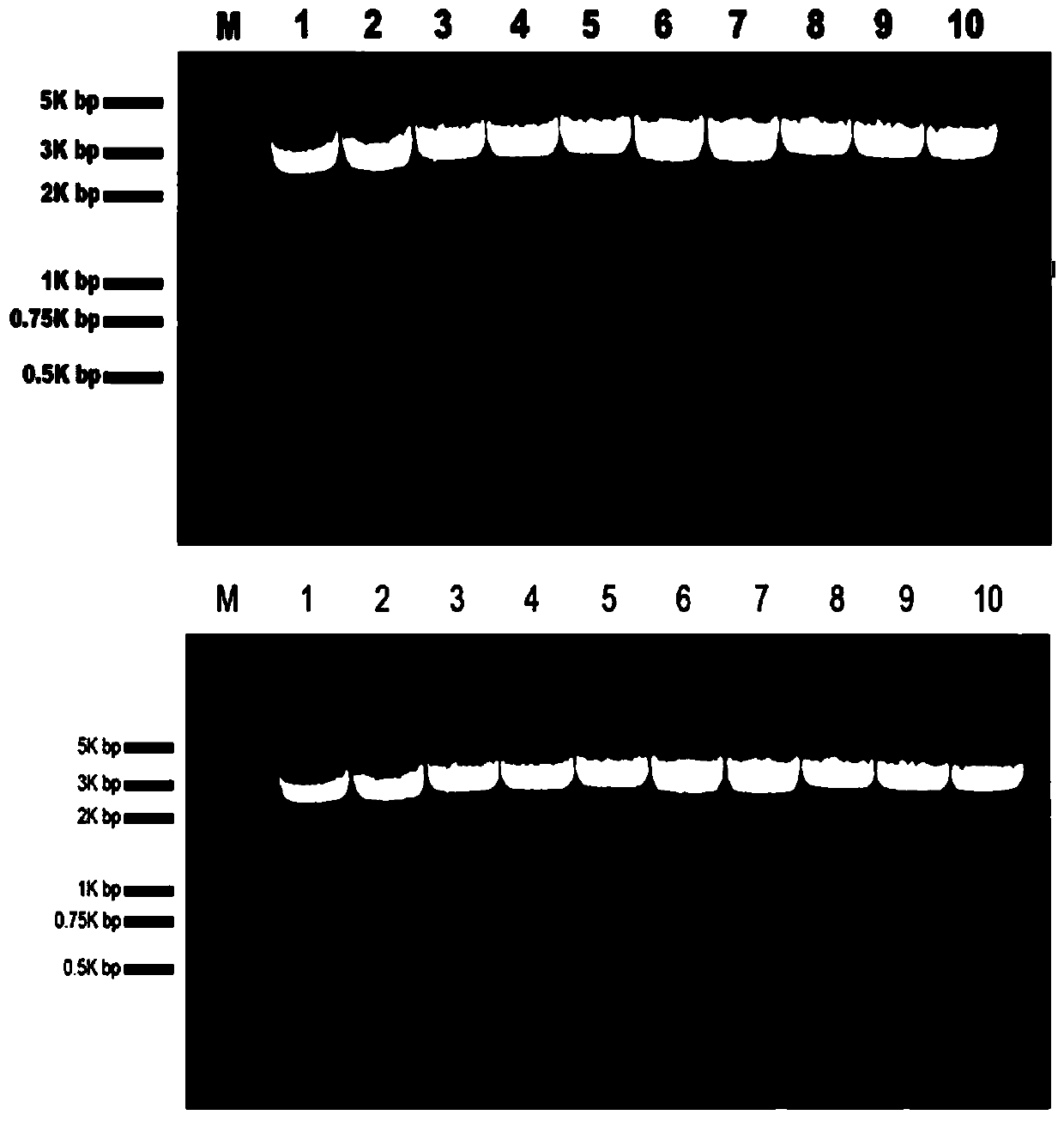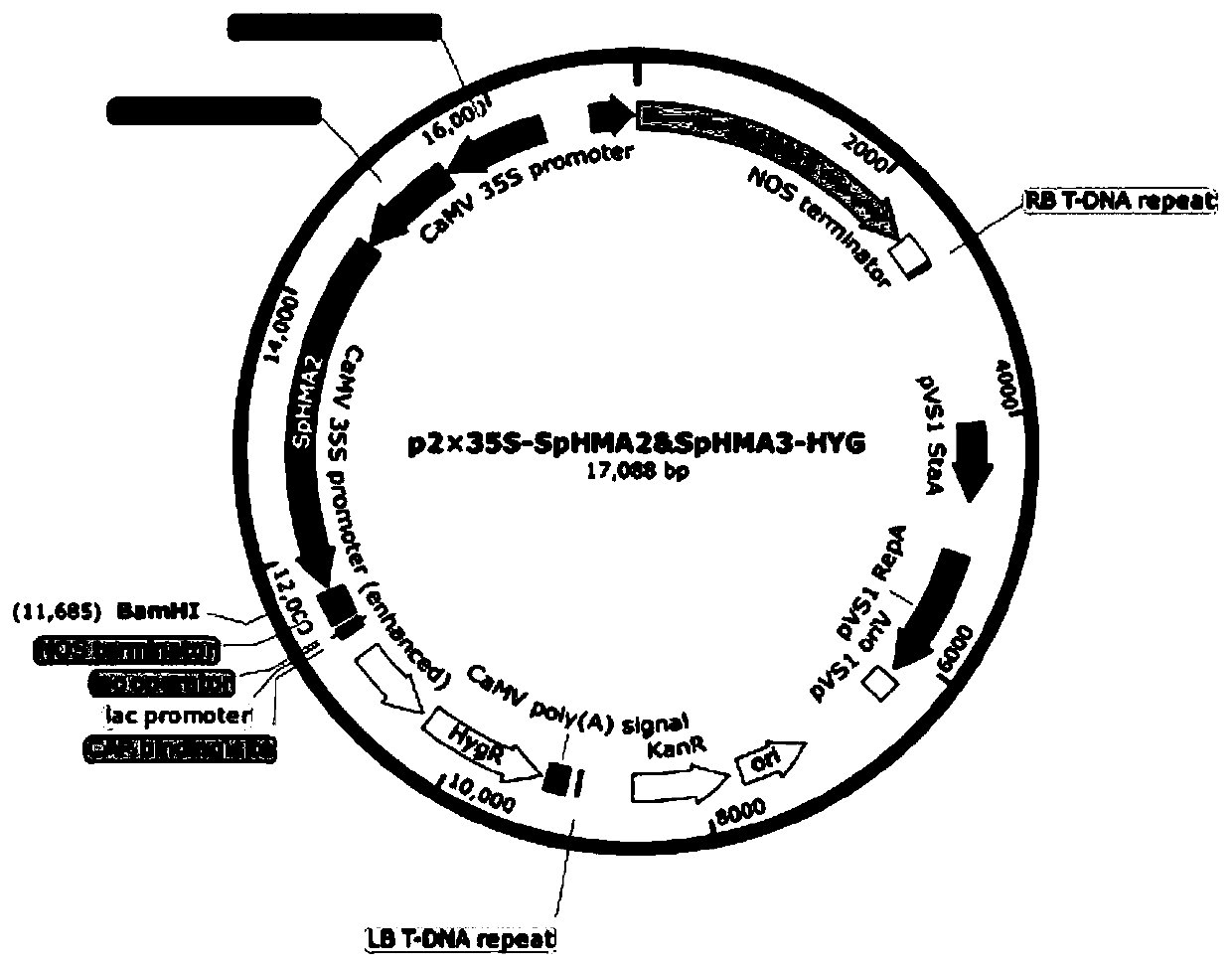Creation and application of sedum plumbizincicola SpHMA2 and SpHMA3 modified heavy-metal hyper-accumulation transgenic engineering rape
A technology of transgenic engineering and sedum with ore, applied in the field of transgenic plants and heavy metal pollution control, can solve the problems of limited tolerance of wild heavy metal enriched plants, special growth environment, heavy metal return, etc., to improve the ability of heavy metal enrichment, genetic Good transformation effect and high expression effect
- Summary
- Abstract
- Description
- Claims
- Application Information
AI Technical Summary
Problems solved by technology
Method used
Image
Examples
Embodiment 1
[0045] Example 1 SphMA2 and SphMA3 double gene cloning
[0046] The seedlings of Sedum sedatus were ground into powder with liquid nitrogen, the RNA was extracted by Trizol method, reverse-transcribed into cDNA using TOYOBO reverse transcription kit, and Primer5 was used to design the cDNA sequence of the SpHMA2 gene provided by NCBI. Downstream primers, and synthetic primers, the nucleotide sequence of the designed primers is:
[0047] Upstream sequence: 5'GAACACGGGGGACTCTAGAGGATCC 3' (as shown in SEQ ID NO: 3);
[0048] Downstream sequence: 5'CATTTATTTCAACCGGTCCGACC 3' (shown in SEQ ID NO:4).
[0049] According to the cDNA sequence of the SpHMA3 gene provided by NCBI, use Primer5 to design its upstream and downstream primers, and synthesize the primers. The nucleotide sequence of the designed primers is:
[0050] Upstream sequence: 5'TTGAAGAGACAATGGATTCTGGAT 3' (as shown in SEQ ID NO: 5);
[0051] Downstream sequence: 5'CATAAAAATAAATTGCGGCGC 3' (shown in SEQ ID NO: 6).
...
Embodiment 2
[0053] The construction of the transformation vector of embodiment 2 heavy metal hyper-enrichment transgenic plant
[0054] The construction of the transformation vector containing 2×CaMV 35S promoter and Hyg selection gene is based on the laboratory’s own pCAMBIA1301 vector, which is obtained after transformation through the following steps:
[0055] Use Primer5 to design the PCR upstream and downstream primers of the CaMV 35S promoter gene, and synthesize the primers. The nucleotide sequence of the designed primers is:
[0056] Upstream sequence: 5'AAGCTTTGAGACTTTTCAACAAAGGGT 3' (as shown in SEQ ID NO: 9);
[0057] Downstream sequence: 5'GGATCCTCAGCGTGTCCTTCCAAATG 3' (shown in SEQ ID NO: 10).
[0058] ① Obtain 2×CaMV 35S promoter: insert the strain containing pCAMBIA1301 vector into LB-Kan medium, and shake the bacteria to extract the plasmid. pCAMBIA1301 was digested with HindⅢ and BamH I, the digested product was electrophoresed on 1% agarose gel, and a small band (about...
Embodiment 3
[0060] Example 3 Overexpression of SphMA2 and SphMA3 Double Genes in Transgenic Plants with Heavy Metal Hyperaccumulation Binary Vector
[0061] Homologous recombination primers were designed according to the two ends of the ORF region of the SpHMA2 gene, and the nucleotide sequence of the designed homologous recombination primers was:
[0062] Upstream sequence (shown as SEQ ID NO: 11):
[0063] 5'AGAGAACACGGGGGACTCTAGAATGGCCTTAGGCGACGAAAAG 3';
[0064] Downstream sequence (shown as SEQ ID NO: 12):
[0065] 5'ACGATCGGGGAAATTCGAGCTCCTACTCCACAACAATCTCGGACAATC 3'.
[0066] Design PCR primers according to the two ends of the ORF region of the SpHMA3 gene, the nucleotide sequence of the designed PCR primers is:
[0067] Upstream sequence (shown as SEQ ID NO:13):
[0068] 5'GAAGATCTATGGATTCTGGATTGGATGAAGTCA 3';
[0069] Downstream sequence (shown as SEQ ID NO: 14):
[0070] 5'GGGTAACCTCAGGCATCCATCTGGCCTTT 3'.
[0071] The 19T vector containing SpHMA2 and the 19T vector conta...
PUM
 Login to View More
Login to View More Abstract
Description
Claims
Application Information
 Login to View More
Login to View More - R&D Engineer
- R&D Manager
- IP Professional
- Industry Leading Data Capabilities
- Powerful AI technology
- Patent DNA Extraction
Browse by: Latest US Patents, China's latest patents, Technical Efficacy Thesaurus, Application Domain, Technology Topic, Popular Technical Reports.
© 2024 PatSnap. All rights reserved.Legal|Privacy policy|Modern Slavery Act Transparency Statement|Sitemap|About US| Contact US: help@patsnap.com










